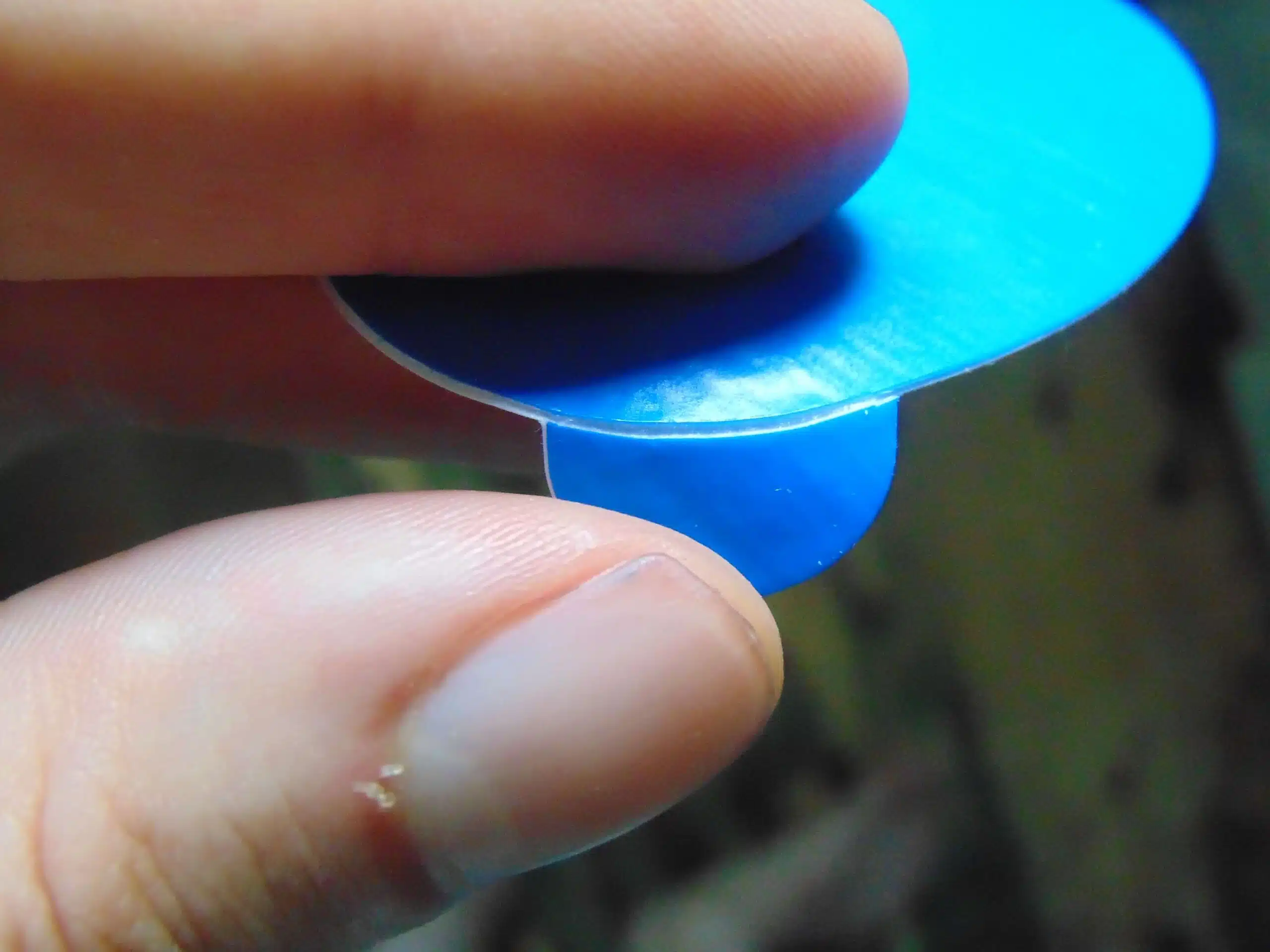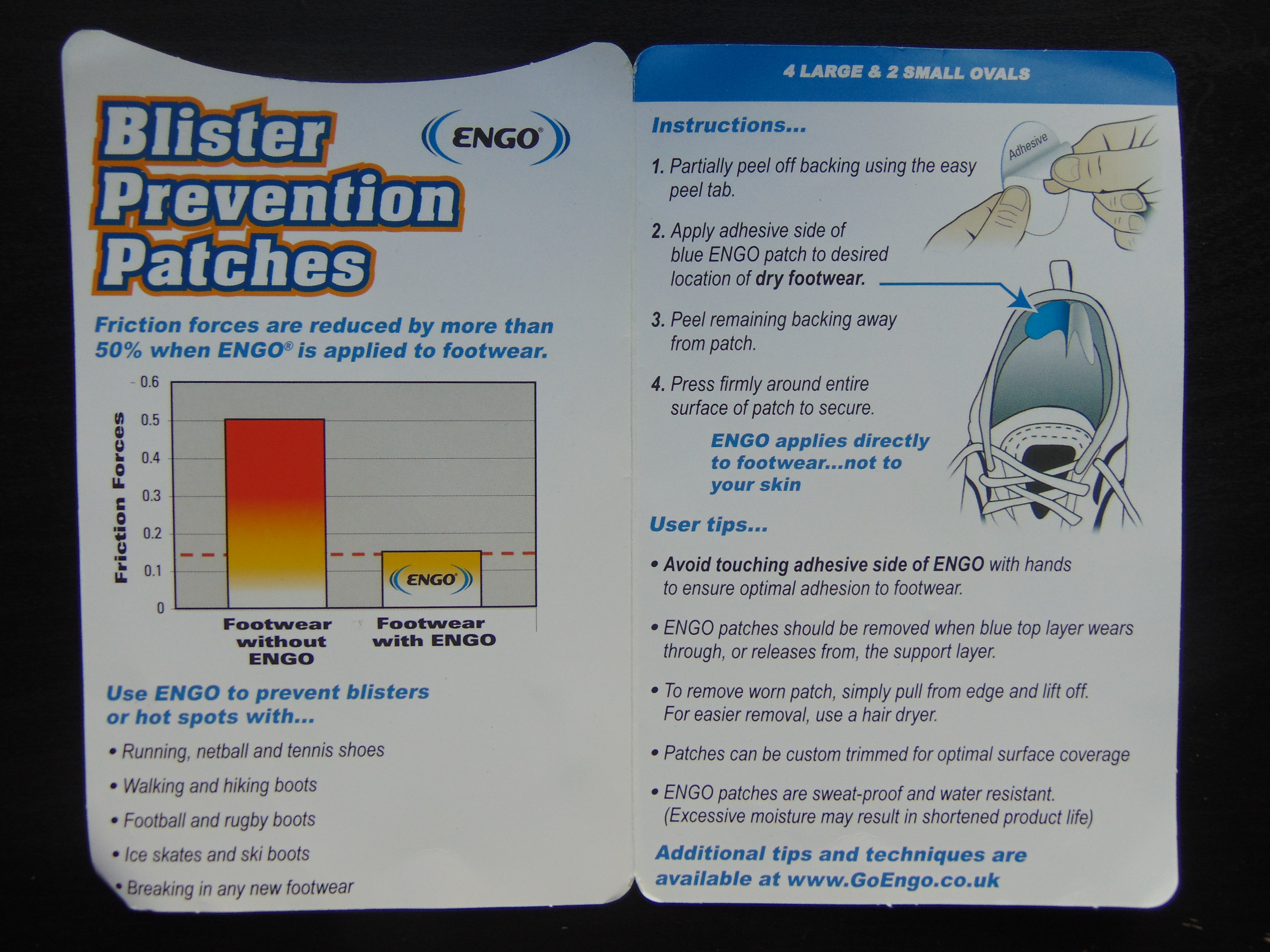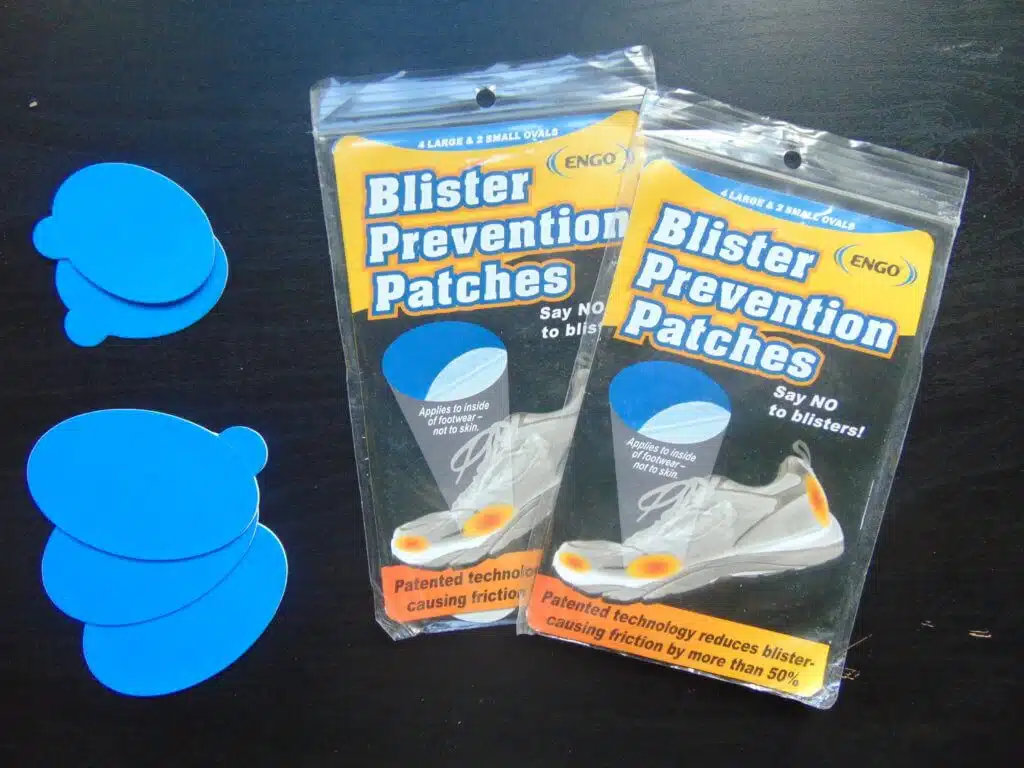When I first heard about Engo I was pretty excited. I have terrible trouble with blisters, and not just out on the hiking trail. They’re a blessing my gardening shoes seem to like bestowing on me too.
Traditional blister remedies – and believe me, I’ve tried them all – whether preventive or treatment, never really made much sense to me. Most of them didn’t work, but I also didn’t understood the thinking behind them either. The vast majority of products, with the exception of socks, are for after the blisters have formed.
What makes Engo different?
Engo is one of those ideas that makes you wonder why nobody’s done it before. “Engo” is a brand of Tamarack Habilitation Technologies, who have a range of products focused around increasing physical performance. They’re based in St. Paul Minnesota…a place that features in Johnny Cash’s song “Big River”.
The idea is a simple one – a smooth, frictionless surface that attaches to the inside of your shoe. Your feet still rub against the friction points, but they don’t form blisters. There are two factors that encourage the development of blisters – moisture and friction. Friction is the main culprit. Moisture weakens the surface of the skin. This is why you can get blisters from rubbing against tool handles, for example, but not from sitting in the bath for too long.

A lot of remedies (especially “anti blister socks”) try to address the problem by reducing the presence of moisture. That’s the idea behind covering your feet in talcum powder (yep, I’ve done it). The issue is that this approach doesn’t address the main factor, only an exacerbating one.
I trialled mine over numerous long-distance walks and I experienced no blistering. And I usually have it bad. They’ve also gotten great reviews from a range of hiking websites. Whether hiking or gardening, I’d highly recommend them. The design is simple: the pad has a smooth surface and a sticky back. You peel back the film and stick it to the inside area of your shoe where the most rubbing is occurring.
[ws_table id=”41″]
The other great place to use them is on the handles of gardening tools. Any gardener knows that shovels, weeders and shears can rub aggressively, especially if they’re working them hard.
What’s actually on offer to prevent blisters?
Let’s look at some of the main products that are available for preventing or treating blisters. I’ve come across three:
- Pads – These are the rectangular pads that attach to the inside heel of the shoe. They’re either cushioned with material or gel. They’re also useless. Whenever I’ve used them they’ve done absolutely nothing to even slow the formation of blisters.
- “Gel” plasters – Compeed are probably the most famous brand of gel plasters. They’re meant to be stuck over blisters and “hot spots” and the gel barrier protects from further rubbing. They’re not a bad product and they can be good for stopping blisters from getting worse.
- Moleskin – Moleskin follows the same principle as the gel plasters. They’re attached to the skin (usually on “hot spots” before the blister forms like Compeed) and are meant to reduce friction.
The problem with most of these “solutions” is that they don’t address the underlying problem: friction. In most cases they’ve usually made my blisters worse! The plasters can be good to have if blisters do start to form (especially on long-distance walks) but ideally you want to halt the problem before it starts!
How many products do Engo offer?
Engo only has one product – the no -friction pad – but they package it in a few different ways and offer different “cuts”. It can be a touch confusing to navigate the various options.

From what I can tell there are four options when it comes to the pads themselves – the large ovals, small ovals, large squares, and the rectangular heel pads. My pack included four large and two small ovals.
There are five main packs available (at the time of writing):
- Back of heel pads – A pack with two heel pads.
- Oval pack – A pack of four oval pads.
- Oval six pack – A pack with four large and two small ovals.
- Rectangle pack – A pack with two large rectangles.
- Womens’ heel pack – A pack of two heel pads in white (not blue).
You can make your own pack too, which is pretty cool! There’s also the option to buy in bulk.
Conclusion
Get them! Whether you want to use them for hiking, jogging or gardening. I’ve tried lots of blister remedies – socks, pads, gels – and these are without a doubt the best. If you do give them a go leave a comment below and let me know how it went.
